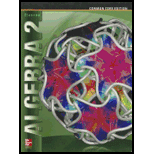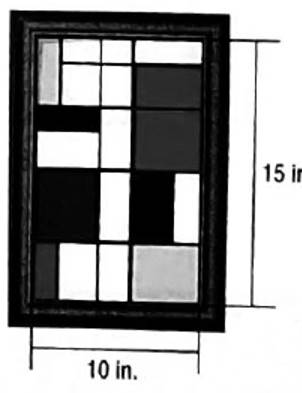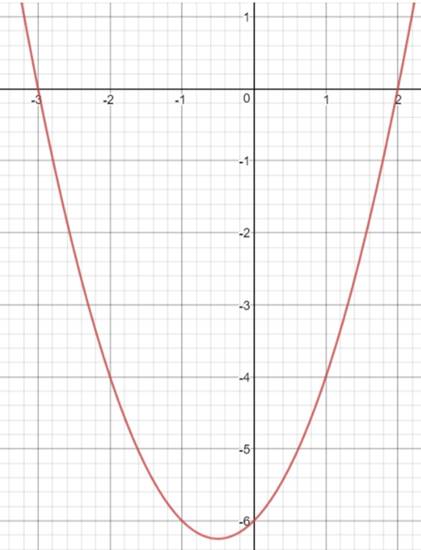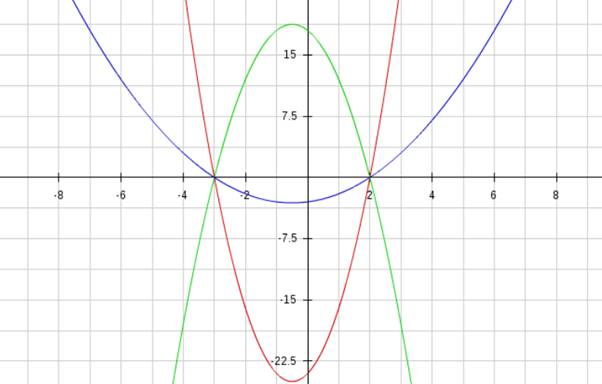
Concept explainers
(a)
To Find: The graph for the function that is related to
(a)
Answer to Problem 68PPS
The required graph is shown in Figure 1.
Explanation of Solution
Given:
The given general equation is
The given diagram is shown in Figure 1

Figure 1
Calculation:
To graph the given related function to show that the values of the quadratic function as,
The graph of the above function is shown in Figure 1

Figure 1
(b)
To Find: The solution of the equation.
(b)
Answer to Problem 68PPS
The required solution of the given equation is
Explanation of Solution
Consider the equation is,
The required solution of the given equation is
(c)
To Find: The graph for the related function for
(c)
Answer to Problem 68PPS
The graph for the related function is shown in Figure 1
Explanation of Solution
Consider the function is,
The required graph of the function is shown in Figure 2

Figure 2
(d)
To Find: The similarities and the differences between the graphs.
(d)
Answer to Problem 68PPS
The similarities and the differences between the graphs is explained.
Explanation of Solution
The figure of the graph two shows that all the three curves have the same number of zeroes but have different slopes. The graph have a positive coefficient both have minimum but one that have the negative coefficient have maximum. The graph with
(e)
To Find: The conclusion that can be made about the relationship between the factored form of the
(e)
Answer to Problem 68PPS
The conclusion made is described.
Explanation of Solution
The conclusion that can be made is that the relationship of the factored form of the quadratic equation and the solution is known already for the allowed factored form by the user of the zero product property. This occurs for the case when the factored form is equal to the 0 and can be isolated the variable to determine the solution.
Chapter 4 Solutions
Glencoe Algebra 2 Student Edition C2014
Additional Math Textbook Solutions
Basic Business Statistics, Student Value Edition
Calculus: Early Transcendentals (2nd Edition)
Pre-Algebra Student Edition
Calculus: Early Transcendentals (2nd Edition)
Elementary Statistics: Picturing the World (7th Edition)
- Problem #5 Suppose you flip a two sided fair coin ("heads" or "tails") 8 total times. a). How many ways result in 6 tails and 2 heads? b). How many ways result in 2 tails and 6 heads? c). Compare your answers to part (a) and (b) and explain in a few sentences why the comparison makes sense.arrow_forwardA local company has a 6 person management team and 20 employees. The company needs to select 3 people from the management team and 7 employees to attend a regional meeting. How many different possibilities are there for the group that can be sent to the regional meeting?arrow_forwardI have 15 outfits to select from to pack for my business trip. I would like to select three of them to pack in my suitcase. How many packing possibilities are there?arrow_forward
- There are 15 candidates running for any of 5 distinct positions on the local school board. In how many different ways could the 5 positions be filled?arrow_forwardCelina is picking a new frame for a custom piece of artwork. She has to select a frame size, material, and color. There are four different frame sizes, three different frame materials, and six different frame colors. She must chose one option only from each category. How many different possible frames could Celina pick from?arrow_forwardA research study in the year 2009 found that there were 2760 coyotes in a given region. The coyote population declined at a rate of 5.8% each year. How many fewer coyotes were there in 2024 than in 2015? Explain in at least one sentence how you solved the problem. Show your work. Round your answer to the nearest whole number.arrow_forward
 Algebra and Trigonometry (6th Edition)AlgebraISBN:9780134463216Author:Robert F. BlitzerPublisher:PEARSON
Algebra and Trigonometry (6th Edition)AlgebraISBN:9780134463216Author:Robert F. BlitzerPublisher:PEARSON Contemporary Abstract AlgebraAlgebraISBN:9781305657960Author:Joseph GallianPublisher:Cengage Learning
Contemporary Abstract AlgebraAlgebraISBN:9781305657960Author:Joseph GallianPublisher:Cengage Learning Linear Algebra: A Modern IntroductionAlgebraISBN:9781285463247Author:David PoolePublisher:Cengage Learning
Linear Algebra: A Modern IntroductionAlgebraISBN:9781285463247Author:David PoolePublisher:Cengage Learning Algebra And Trigonometry (11th Edition)AlgebraISBN:9780135163078Author:Michael SullivanPublisher:PEARSON
Algebra And Trigonometry (11th Edition)AlgebraISBN:9780135163078Author:Michael SullivanPublisher:PEARSON Introduction to Linear Algebra, Fifth EditionAlgebraISBN:9780980232776Author:Gilbert StrangPublisher:Wellesley-Cambridge Press
Introduction to Linear Algebra, Fifth EditionAlgebraISBN:9780980232776Author:Gilbert StrangPublisher:Wellesley-Cambridge Press College Algebra (Collegiate Math)AlgebraISBN:9780077836344Author:Julie Miller, Donna GerkenPublisher:McGraw-Hill Education
College Algebra (Collegiate Math)AlgebraISBN:9780077836344Author:Julie Miller, Donna GerkenPublisher:McGraw-Hill Education





